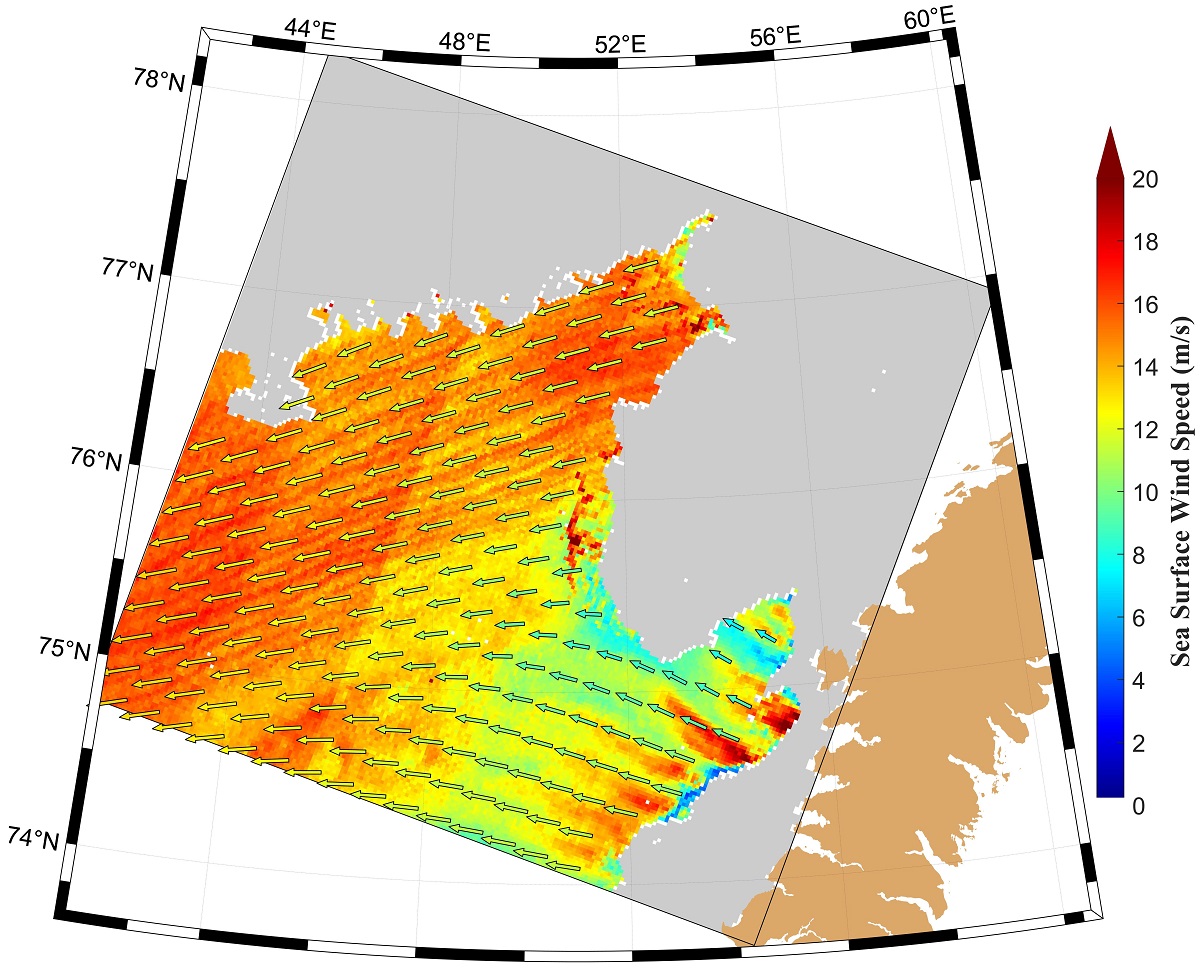In this paper, we presented a method of retrieving sea surface wind speed from Sentinel-1 synthetic aperture radar (SAR) horizontal-horizontal (HH) polarization data in extra-wide mode, which have been extensively acquired over the Arctic for sea ice monitoring. In contrast to the conventional algorithm, i.e., using a geophysical model function (GMF) to retrieve sea surface wind by spaceborne SAR, we introduced an alternative method based on physical model guided neural network. Parameters of SAR normalized radar cross section, incidence angle, and wind direction are used as the inputs of the backward propagation (BP) neural network, and the output is the sea surface wind speed. The network is developed based on more than 11,000 HH-polarized EW images acquired in the marginal ice zone (MIZ) of the Arctic and their collocations with scatterometer measurements. Verification of the neural network based on the testing dataset yields a bias of 0.23 m/s and a root mean square error (RMSE) of 1.25 m/s compared to the scatterometer wind speed. Further comparison of the SAR retrieved sea surface wind speed with independent buoy measurements shows a bias and RMSE of 0.12 m/s and 1.42 m/s, respectively. We also analyzed the uncertainty of retrieval when the wind direction data of a reanalysis model are used as inputs to the neural network. By combining the detected sea ice cover information based on the EW data, one can expect to derive simultaneously sea ice and marine-meteorological parameters by spaceborne SAR in a high spatial resolution in the Arctic.

